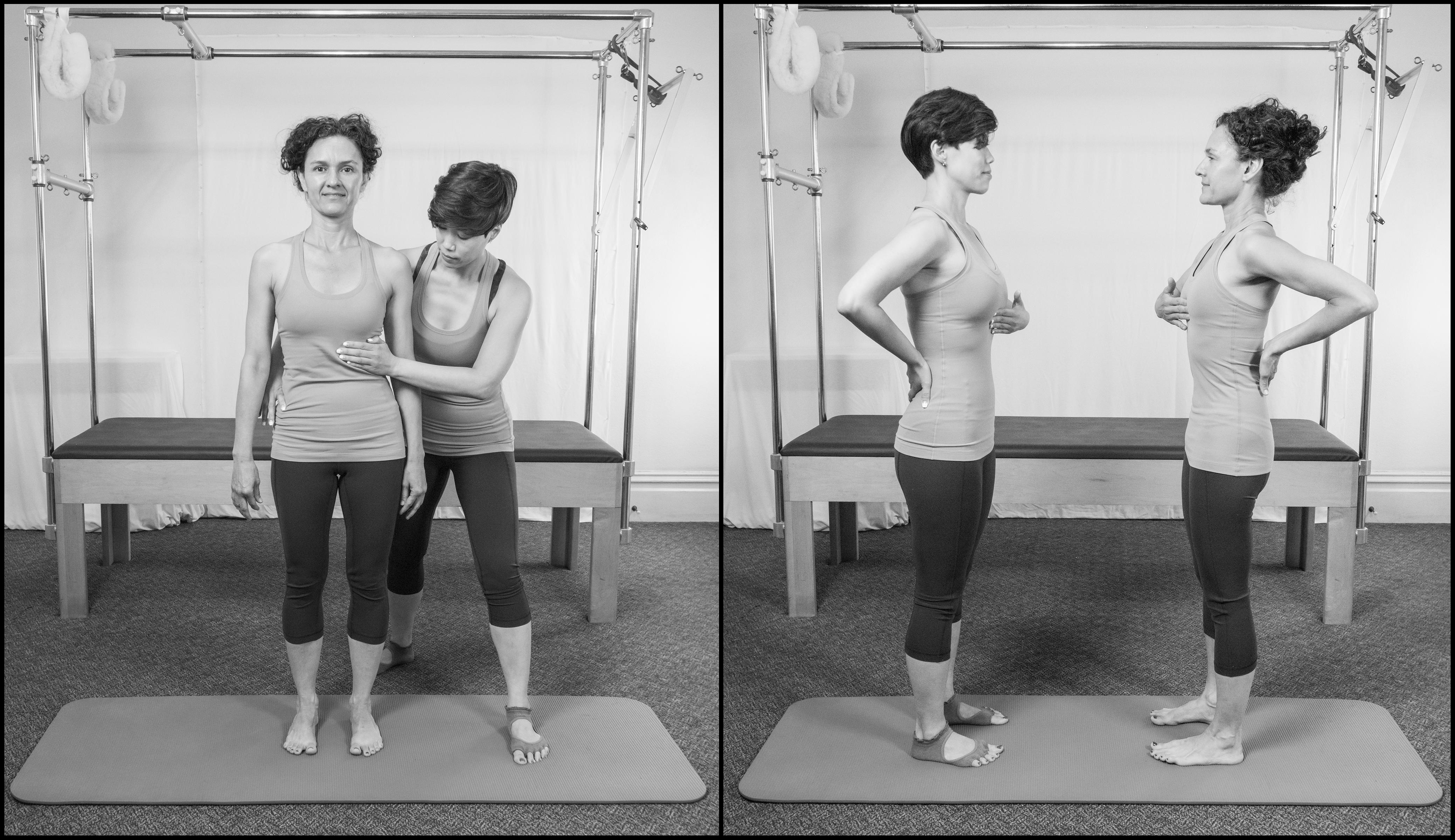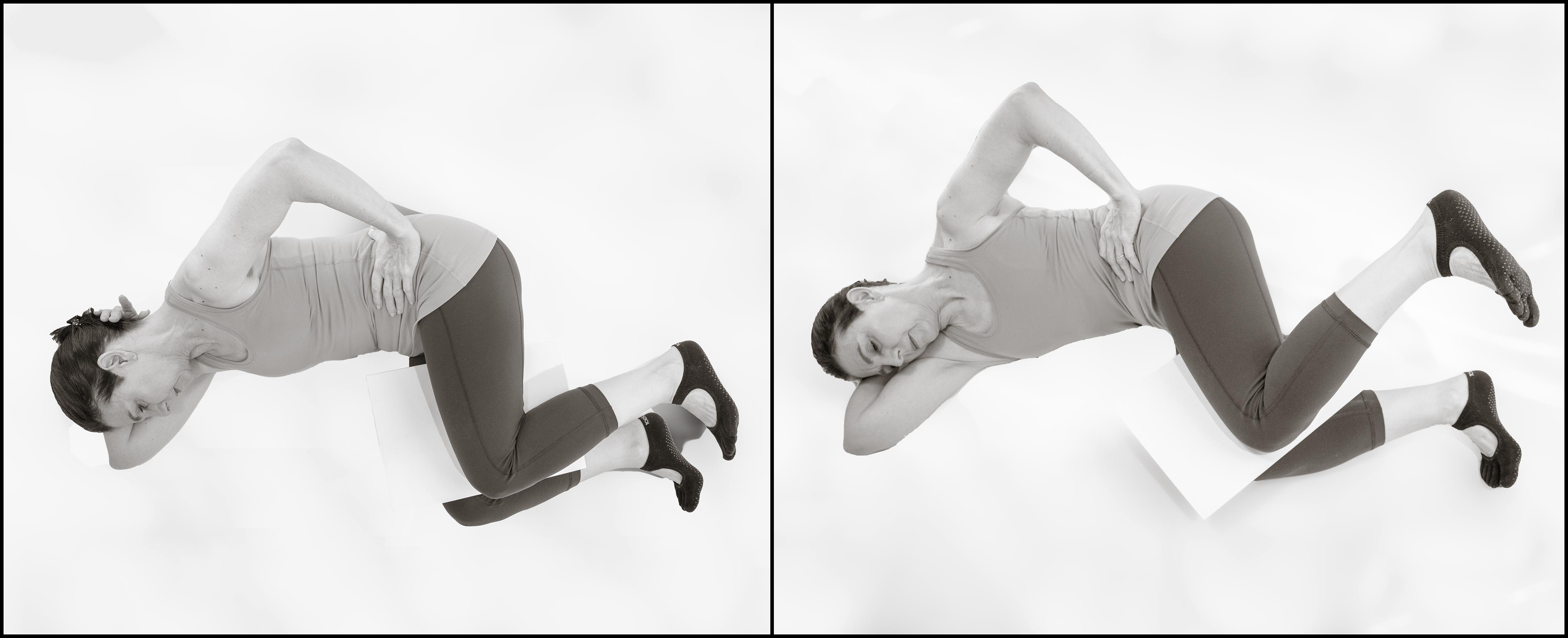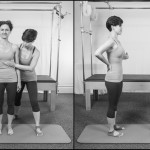Issue #300
Wednesday May 5, 2020
Coming into the Zone with Pilates
by Suzanne Martin
Breathing is a major principle in our Pilates tradition. Mr. Pilates continually emphasizes breathing in Return to Life. I believe we can all agree that all movement starts with a breath as movement emanates from the torso.
Eve Gentry said to use the right amount of breath for the right intensity of the movement. This principle has certainly served me and many of my clients well over the years. Yet what a task to explain to clients how one develops such efficiency. Many programs exist worldwide to take on this challenge in their primary teacher trainings. Nevertheless, once the client is in front of us, each teacher has to find their own voice and creativity in explanation. Here are a few ideas that have served me well over time that I want to share with you.
As a dance student and then teacher, one big influence was the writing of Lulu Sweigard who performed a study to see what postural images helped dancers to maintain postural and organizational integrity in what we call ‘the heat of battle’ on the dance floor. I used her book as the basis for my Issues in Dance Medicine teaching and I used it again for my recent book. Her work has seen a resurgence of interest in the Pilates world in the past few years because it is quite ingenious and can be applied to any movement form. Although academic in nature, her ideas have found popularity with other movement teacher trainers and methods that have succeeded in making her work more popular and accessible.
Sweigard’s basic premise for stacking the ribcage over the pelvis is to line up the body vertically with imagery by making an X as seen from the side. In our Pilates training, we learn the X–box line up as seen from the back. However, Sweigard suggests using the sagittal, gravitational neutral curves and merely bring them into vertical line and elongation. The details are a bit elaborate, yet if a client merely places one thumb vertically between the breasts on the anterior and the other hand vertically on the sacrum in the back and then sandwiches the hands, they help to create not only stacked thorax and abdomen, but also a perfect internal space for breathing.

Amazingly enough, a couple of similar teachings came from the clinical world a number of years ago that provide explanations in a more anatomic and physiologic way. “Oh boy!”, I thought to myself. Following in Sweigard’s footsteps (in a humble way, please), I started to do as she suggested: imagine, think and feel. I began to imagine more of the posture and its positional ideal. Here is an example of those clinical influences that fill in the ‘think’ component.
The Postural Restoration Institute came out with a term called the Zone of Apposition (ZOA) as a way to explain how critical the area of the torso is from T8 to L1. Apparently, this spinal transition point (where the rigid ribcage meets the flexible waist) is a particularly vulnerable area due to the naturally occurring asymmetry of the anatomic locations of the central tendons of the respiratory diaphragm. What is found clinically is that people can develop an anterior flared ribcage on the left side as a result of this naturally occurring asymmetry. This idea is one theory about how people can develop spinal asymmetry. Unfortunately, it is not a hard and fast rule that the left side becomes flared for those who go on to develop scoliosis, , but is a good starting point to explain why seemingly idiopathic (no known cause) scoliosis develops.
The ZOA exerts influence on everyone whether they have a significant spinal asymmetry or not. In fact, it is considered to be within normal limits if a person has only a minor ten degree curve. Research not only shows most of the world is right-handed, but that right-handed people usually display a right ribcage convexity which may be as much as ten degrees. Directional bias, such as using a favorite arm or leg in a sport, when combined with the natural ZOA asymmetry and prevalent right-handedness can cause a common compensatory pattern. This was so interesting to me that I conducted an experiment in my conference teachings to test out some group exercises to see if a correction would occur, and indeed it did.
To begin, sit and transversely rotate the pelvis to see if the transverse rotation is equal in both directions. Note which way is more difficult. We can perform two corrective exercises that involve lying on the right side, flexing the legs into a ninety-ninety position, pressing the right foot against a wall or surface, and then placing a pillow or ball between the knees. The first exercise involves adducting the pillow/ball and isometrically pulling the top hip posteriorly so that the top knee slightly shortens past the bottom knee. Hold for twenty counts, then release; repeat four times. For the second exercise, reset to the starting position and then internally rotate the top knee/femur toward the bottom knee. Again, hold for twenty counts, then release; repeat four times. Finally, check to see if the seated pelvic rotation range has remained the same, has increased mobility into the difficult direction, or decreased the mobility. Astonishingly, this little experiment increased mobility over a number of participants, even when performed sitting in a conference hall.

As movement teachers, why should we care about the ZOA? When the ZOA is not optimal (meaning the ribcage not being stacked appropriately on the pelvis), it has a number of unfortunate consequences. Excursion of the respiratory diaphragm is shortened due to a flattening of the dome of the diaphragm. Not only is optimal oxygen not delivered to the body, it also jams up the vertebrae, interfering with flexion and rotation of the spine. In addition, we then would need to take more breaths to take in the required oxygen, causing increased breath cycles, essentially hyperventilation.
So, a simple postural imbalance of the rib cage flare in combination with handedness spirals into a domino effect of hyperventilation, which is dysfunctional breathing. Dysfunctional breathing causes a physiologic effect increasing anxiety, completing the ‘feel’ element of “imagine, think, and feel”. Eve Gentry was wiser than her years, much like her mentor, Mr. Pilates. Learning the discipline of developing the proper amount of breath for the proper movement is healthy for body, mind and spirit.
A follow-up article later this year will discuss how the stacking of the vertebrae is enhanced by upper core and rotational Pilates apparatus work.
 Dr. Suzanne Martin has been practicing Pilates for over 30 years. She is a doctor of physical therapy, exercise physiologist and a gold-certified Pilates expert with a home studio in Alameda, California. An international presenter, she blends art and science, into her writing and instruction. She has been Lead Physical Therapist for over 20 years with Smuin Ballet. As founder of Pilates Therapeutics LLC she teaches worldwide on the subjects of spinal asymmetry, cancer restoration, foot management and performing arts enhancement. Look for her latest publication from Handspring Publishers, Spinal Asymmetry and Scoliosis; Movement and Function Solutions for the Spine, Ribcage, and Pelvis, available on the Pilates Therapeutics web site. For further information and to see her teaching schedule, go to www.pilatestherapeutics.com.
Dr. Suzanne Martin has been practicing Pilates for over 30 years. She is a doctor of physical therapy, exercise physiologist and a gold-certified Pilates expert with a home studio in Alameda, California. An international presenter, she blends art and science, into her writing and instruction. She has been Lead Physical Therapist for over 20 years with Smuin Ballet. As founder of Pilates Therapeutics LLC she teaches worldwide on the subjects of spinal asymmetry, cancer restoration, foot management and performing arts enhancement. Look for her latest publication from Handspring Publishers, Spinal Asymmetry and Scoliosis; Movement and Function Solutions for the Spine, Ribcage, and Pelvis, available on the Pilates Therapeutics web site. For further information and to see her teaching schedule, go to www.pilatestherapeutics.com.It is never too late to be what you might have been. – George Eliot
The only sin is mediocrity. – Martha Graham
The only sin is mediocrity. – Martha Graham

